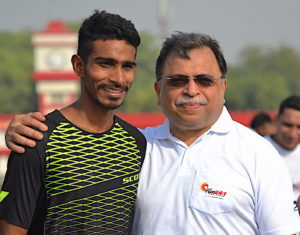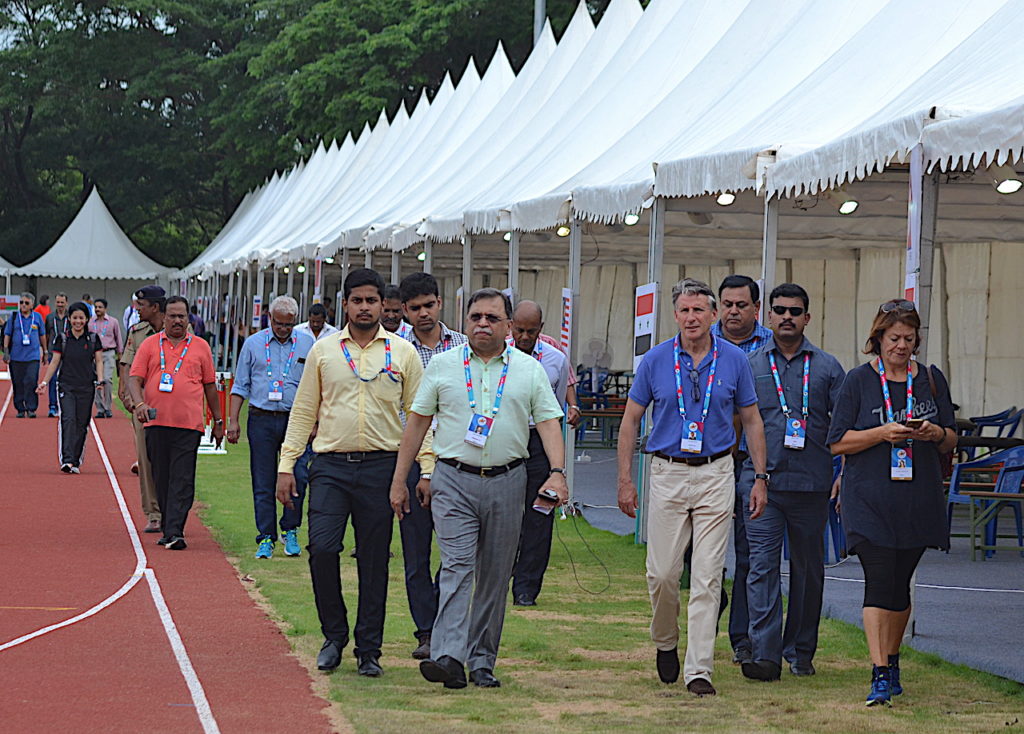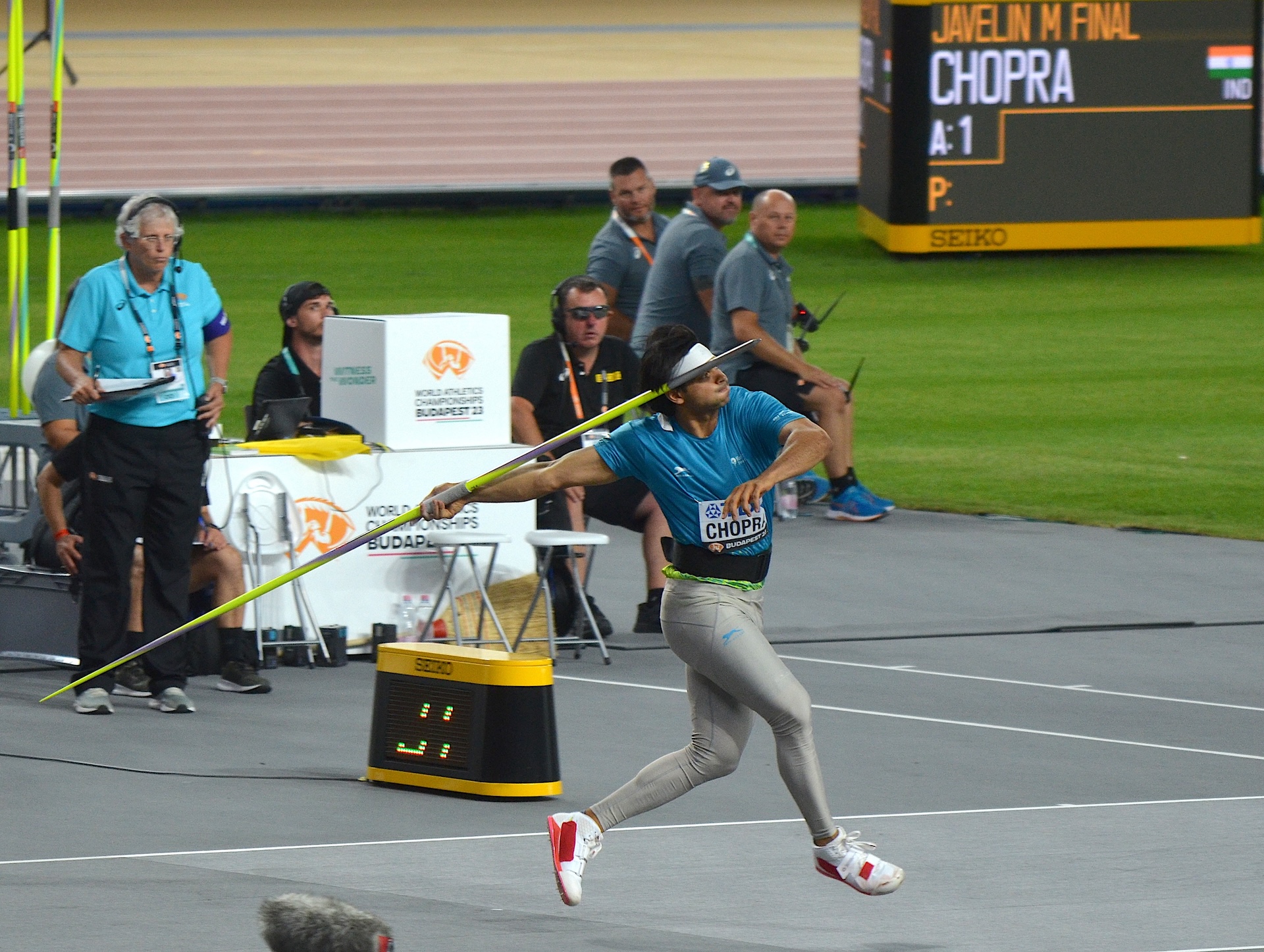Indian sports administrators have made rapid strides with their contribution towards leadership in world sport in the past few years. Dr Narinder Dhruv Batra heads the International Hockey Federation and Anil Khanna is Vice President of the International Tennis Federation. Olympian and 11-time National Champion, sprinter Adille Sumariwalla, who is the first Indian to have been elected to the IAAF Council, will be seeking re-election to the Governing Body of the International Association of Athletics Federations (IAAF), in Doha next month.
He is the first Olympian to head a National Sports Federation, taking over at a critical time in Indian athletics history. International Olympic Committee member Raja Randhir Singh points out that there could have been a leadership vacuum at the Athletics Federation of India.
“My colleague Adille Sumariwalla became AFI President in 2012 and steered it to safer waters,” he says. “I have known him from the time he competed in the Moscow Olympic Games 1980 and have been pleased with his evolution as an athlete and administrator as well as an individual. I am sure he will bring his experience to bear both for India and the International Federation,” Raja Randhir Singh says.
As for Adille Sumariwalla himself, he is confident that he will continue to traverse the two stages, taking the learnings from one to the other and vice-versa. “India and I have been privileged to receive enormous affection everywhere I have travelled to. I am sure that we will continue to get the backing of the IAAF members and President Lord Sebastian Coe’s zeal will be strengthened,” he says.

Excerpts from an interview with Adille Sumariwalla:
How do you look back at the last four years during which you have been a member of the IAAF Council?
It seems like yesterday when we were elected. Within weeks, there was dismay and, in equal measure, shock that the French Police arrived at the IAAF headquarters, to investigate serious charges against the former President, Treasurer and certain staff members of the IAAF. It was immediately clear that IAAF’s credibility was at an all-time low, given that the doping scandal had enveloped Russia only a year earlier. We knew we had to start from scratch and find a new way to run the sport. Now, nearly four years later, we can look back with pride at the revamp and reforms that have been introduced with integrity and core values. I am happy that I was part of the team that helped IAAF evolve by setting up a solid, transparent organisation.
What has been your learning from the experience of the last four years?
It was a great learning for me, attending the Congress and Council meetings. It hits you that IAAF has members which include countries with the largest populations, like China and India, as well as a country like Norfolk Island, with just over 1500 people. The diversity among the people of the world and the range of different issues that each community faces, comes across tellingly during my travels. I am able to understand that we have to work towards helping smaller nations and address their aspirations better. It is quite an experience to interact with friends from more than 200 nations and territories across all continents.

What exactly has your own role been?
The IAAF gave me two important tasks. First, since I had the experience of heading a multinational multimedia organisation, I headed the Strategic Communications Advisory Board. It was a challenging and, at the same time, rewarding experience to help steer IAAF through a stormy period, to a position of stability and global credibility. I was also asked to chair the committee that examined the phenomenon of age-manipulation and found ways to tackle it. After doping, age manipulation is the second biggest problem faced in sport, especially in developing countries where births are not registered diligently. Of course, there is also the scourge of wilful manipulation. As a team, the committee was able to come up with a plan which has found great acceptance and has placed IAAF in good light.
How much of a help was it to you that you are from India?
Having travelled the diverse land that is India, with its 22 official languages and 99 non-scheduled languages, as well as countless dialects, I have been prepared for the multi-cultural and multi-ethnic world athletics environment. That I have grown up amidst cultural diversities, and the education received over the last four years in the Council, have held me in good stead to understand the variety of problems IAAF faces, and the solutions needed, as I head to the next four years in the IAAF.
How easy or difficult was achieving the goals IAAF Council set for itself?
There is no doubt that leadership came from the top. IAAF President Lord Sebastian Coe had been clear that change was needed. And his team did just that. The President encouraged debate and discussion on all matters and, after much deliberation, most issues were resolved and decided unanimously. In such an environment, it was easy to lead teams that ushered in change. Amongst the many changes made are the new policy on more equitable representation across gender and the establishment of the Athletics Integrity Unit.
What is the biggest change brought in? And what remains as work in progress?
We have ushered in the administrative reforms and laid the framework in such a way that the past will not revisit us and hurt IAAF in the future. There are four key areas that need attention – doping, age-manipulation, performance manipulation and transfer of allegiance. Regarding Transfer of Allegiance, this issue has already been addressed by putting a new policy in place. Also, we have to strengthen the trust of the fans, athletes and sponsors, and must build a solid base to be able to bring in more sponsors and fans. We realise that most of the fans of track and field sport are from a higher age group, and now have to find ways to draw the younger generation to our sport and identify new platforms to take the sport to them.
Have any steps been taken in that direction?
We have set up IAAF Production – a joint venture company with ITV in the UK – so we can control what is shown on Global Television. IAAF Production will be using around 120 cameras for the World Championships in Doha. It will be interesting to see if any other sporting discipline has as many cameras in place. The TV production unit has come up with innovations to make the sport more real time, informative and attractive for the television audience. The markers on the screen for events like long jump and triple jump, and the throws, make it easy for the viewers to know relative performances of competitors.
How can IAAF do that?
We must grow our area competitions and relook at formats that will appeal to younger spectators. We have the Diamond League, the one-day meets that last six hours, which are televised. We are looking at tight meets that last 90 minutes to 2 1/2 hours, so exciting as well as relevant, that they do not let the viewer shift focus from the screen. There is no doubt that we want to pull in more youngsters to watch and be hooked to the sport, for life. We have established a World Relays Challenge, where we have introduced the mixed relays and the hurdles relays. We are testing new formats. The World Cross Country Championship 2019 in Denmark is a good example. The runners had to negotiate an incline over the roof of the Moesgaard Museum and a beer tent. Yes, we want to make the sport exciting for the competitors and for the viewers.
What are the biggest commercial challenges facing IAAF?
Commercially, IAAF lost some sponsors like Nestle and Adidas. We are working with the IAAF President to bring in new sponsors. We have succeeded in getting Qatar Bank and Asics on board and, recognising that India can play a big role, we are looking at some Indian companies as potential IAAF partners. On another front, IAAF will have to support the smaller nations financially, working out a more equitable way to distribute revenue.
How do you see your own work as president of the Athletics Federation of India?
During my tenure as AFI President, we have produced, for the first time in the history of Indian Athletics, two Junior World Champions – Neeraj Chopra (javelin throw) in Bydgoszcz, Poland in 2016 and Hima Das (400m) in Tampere, Finland in 2018 – as well as the first World University Games gold medallist Dutee Chand (100m), in Napoli, Italy this year. We not only hosted the Asian Athletics Championships in Bhubaneshwar in 2017, but also had excellent results in the Asian Games in 2018 and the Asian Championships in Doha this year. We are now aspiring to make a mark globally.
It is also important to state that I oversee the largest track and field talent search programme in the world – the National Inter-District Junior Athletics Meet that touches more than 50,000 boys and girls in the under-14 and under-16 age group categories, from more than 400 districts across our vast country.
Has your experience of being a member of the IAAF Council helped the sport in India?
I am pleased that my experience with IAAF has helped India in two crucial areas. First, we have introduced the coaches training programme and are targeting to produce 1000 IAAF level one coaches. We already have 360 level one coaches. Secondly, we have now made officials of the State Athletics Associations accountable and are sure that they will take the necessary steps to have the athletes’ age verified before they come to the National stage.
Further, we have convinced our National Anti-Doping Agency to test more track and field athletes than ever before. In 2018, it tested more than 1000 track and field athletes at all levels. We are the first National Sports Federation to introduce the ‘No-needle policy’ in training and in competition. I have pushed for India to introduce a law to criminalise doping, bringing in colleagues from Germany to advise those drafting the proposed law. I am happy to have played a role in getting that draft legislation prepared.



